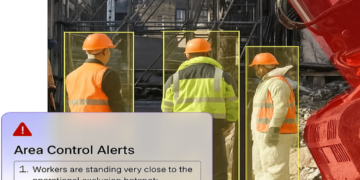Underground construction has seen remarkable advancements in recent years, thanks to the development of more efficient and effective tunneling technologies. Among these, tunneling and microtunneling machines have played a transformative role in projects ranging from utility installation to transportation infrastructure. These machines offer a safer, more cost-effective, and environmentally friendly alternative to traditional methods of underground construction, particularly in urban environments where surface disruption is a concern.
In this article, we will explore the key aspects of tunneling and microtunneling machines, including their technology, applications, benefits, and why they are increasingly becoming the go-to solution for modern construction projects.
Understanding Tunneling & Microtunneling Machines
Tunneling & Microtunneling machines are both methods of creating tunnels underground, typically for the installation of utilities such as water, sewage, gas pipelines, and telecommunications cables. The key difference between tunneling and microtunneling lies in the scale of the machines used and the size of the tunnels they create.
Tunneling machines are large, heavy-duty machines used for creating large-diameter tunnels, usually for high-capacity infrastructure projects like subway systems, highways, or large water mains. These machines are capable of digging through a wide range of soil types and can handle projects that require significant tunnel diameters, often ranging from several meters to tens of meters.
Microtunneling machines, on the other hand, are smaller, more compact versions used for creating smaller tunnels. Microtunneling is typically used for the installation of smaller pipes (usually between 4 to 60 inches in diameter) for utilities such as sewage systems, stormwater drains, or electrical conduits. These machines are often employed in more constrained environments, such as urban areas, where minimal surface disruption is a key priority.
The Technology Behind Tunneling & Microtunneling Machines
Tunneling and microtunneling machines are highly specialized and sophisticated pieces of equipment. The process involves the use of a rotating cutting head, which is designed to break through soil and rock. Once the soil is excavated, it is removed via a conveyor system or slurry pipeline, depending on the specific machine configuration.
One of the most advanced technologies used in both tunneling and microtunneling machines is earth pressure balance (EPB) technology. EPB machines help stabilize the tunnel face by using the pressure of the excavated soil to prevent collapse during the tunneling process. This is especially useful in soft or waterlogged soils where the risk of tunnel face collapse is higher.
In microtunneling, the machines are typically guided by remote-control systems and lasers for precise steering, ensuring that the tunnel follows the planned path. The machines are also often equipped with slurry shield systems, which use a mixture of water and bentonite clay to transport the excavated material to the surface, reducing the environmental impact of the excavation process and preventing the tunnel from collapsing.
Key Applications of Tunneling & Microtunneling Machines
Tunneling and microtunneling machines have a wide range of applications, and both are used for different types of underground construction projects. Below are some of the most common uses:
- Utility Installation: One of the primary uses of both tunneling and microtunneling machines is the installation of underground utilities. These machines are ideal for laying water pipes, sewer lines, gas pipes, and telecommunications cables without disturbing the surface. Microtunneling, in particular, is perfect for small-diameter utility installation in urban areas where surface disruption must be minimized.
- Transportation Infrastructure: Large tunneling machines are widely used in the construction of transportation infrastructure, such as subway tunnels, underground highways, and railway tunnels. These projects require significant excavation and large-diameter tunnels, which are ideal for conventional tunneling machines.
- Environmental Projects: Tunneling and microtunneling machines are often used for environmental protection projects, such as creating stormwater tunnels, drainage systems, and wastewater treatment plant connections. These machines allow for precise tunneling in sensitive areas without disturbing surrounding ecosystems.
- Crossings Under Waterways or Roads: Both tunneling and microtunneling are effective for crossing under bodies of water, roads, and railways where traditional excavation is either impractical or too disruptive. This makes them ideal for infrastructure projects that require horizontal drilling or tunneling beneath significant obstacles.
- Mining Operations: Tunneling machines are also used in mining operations to extract minerals deep underground. The machines help miners create tunnels that provide access to mineral reserves while minimizing the need for surface mining operations.
Advantages of Tunneling & Microtunneling Machines
The use of tunneling and microtunneling machines offers several significant advantages over traditional methods of underground construction, especially in urban environments. Some of the primary benefits include:
- Minimal Surface Disruption: One of the most significant advantages of both tunneling and microtunneling machines is their ability to perform underground work without disturbing the surface. Traditional open-cut trenching methods can cause significant disruption, damage to roads, buildings, and utilities, and environmental impact. In contrast, these machines can tunnel through the ground with minimal surface disruption, making them ideal for working in densely populated or sensitive areas.
- Increased Safety: Tunnel boring is generally safer than open-cut methods, as it reduces the risk of accidents associated with excavation, such as cave-ins or equipment failure. The advanced technology in tunneling and microtunneling machines allows operators to work in a more controlled environment, minimizing human error and safety hazards. Additionally, the use of slurry shields in microtunneling helps prevent soil collapse during excavation.
- Cost-Effectiveness: While tunneling and microtunneling machines can be expensive to purchase or rent, they can significantly reduce project costs in the long run. By eliminating the need for extensive surface excavation, these machines help reduce labor costs, environmental mitigation efforts, and project delays. In many cases, the increased speed and efficiency of these methods offset the initial investment in the machinery.
- Precision and Accuracy: Both tunneling and microtunneling machines use advanced navigation systems, such as laser guidance and remote control, to ensure precise and accurate tunnel alignment. This level of precision is particularly crucial for projects that require tight tolerances, such as utility installations or transportation tunnels that must align perfectly with existing infrastructure.
- Environmental Benefits: The environmental impact of traditional excavation methods can be substantial, especially in areas where soil erosion, water contamination, or ecosystem disruption is a concern. Tunneling and microtunneling machines offer a more sustainable approach by minimizing surface disruption and reducing the amount of material that needs to be transported to and from the site.
The Future of Tunneling & Microtunneling Machines
The future of tunneling and microtunneling machines is closely tied to innovations in automation, artificial intelligence, and machine learning. These advancements are expected to increase the efficiency and safety of tunneling projects even further, allowing for even more precise and faster excavation.
Additionally, as urbanization continues to grow and more projects are developed in dense urban areas, the demand for minimal surface disruption and environmentally friendly construction methods will drive the adoption of these technologies. Future tunneling and microtunneling machines may also be designed to handle more complex geotechnical conditions, making them adaptable to a broader range of applications.
Conclusion
Tunneling and microtunneling machines have revolutionized underground construction, providing an efficient, safe, and environmentally friendly solution for a wide range of infrastructure projects. These machines have proven invaluable for utility installation, transportation tunnels, environmental projects, and more. With continuous advancements in technology, these machines will only become more sophisticated, offering even greater precision and reliability in underground construction. As the demand for efficient and non-invasive construction methods grows, tunneling and microtunneling machines will remain at the forefront of modern construction techniques.


















